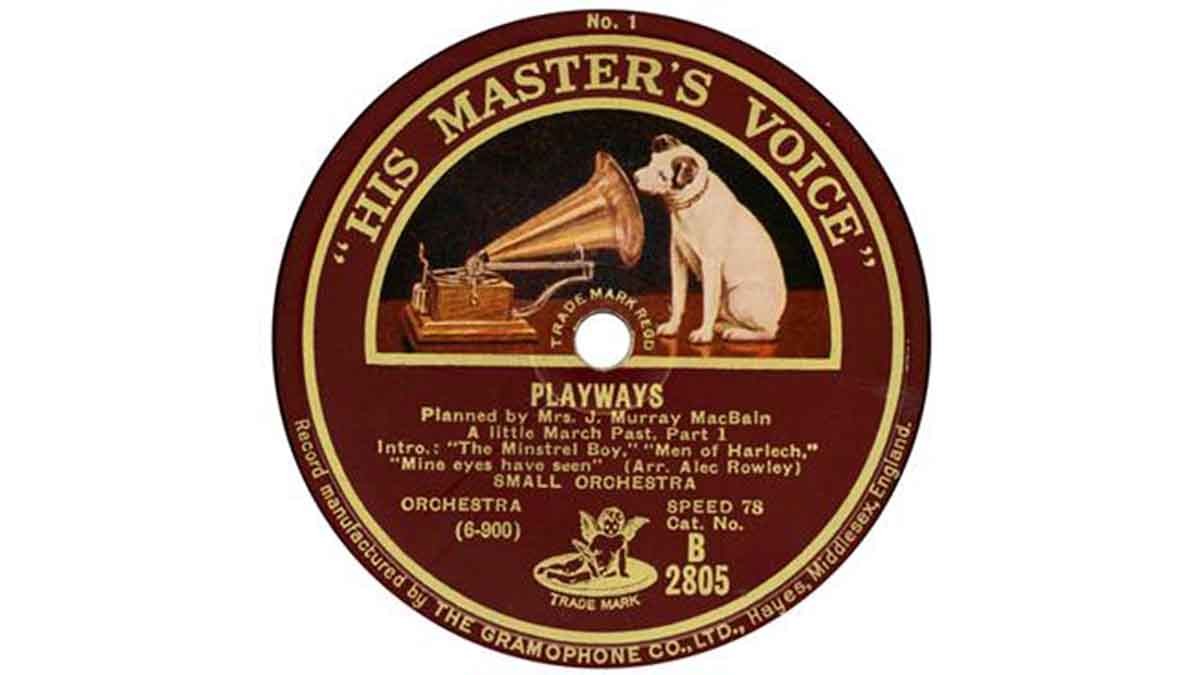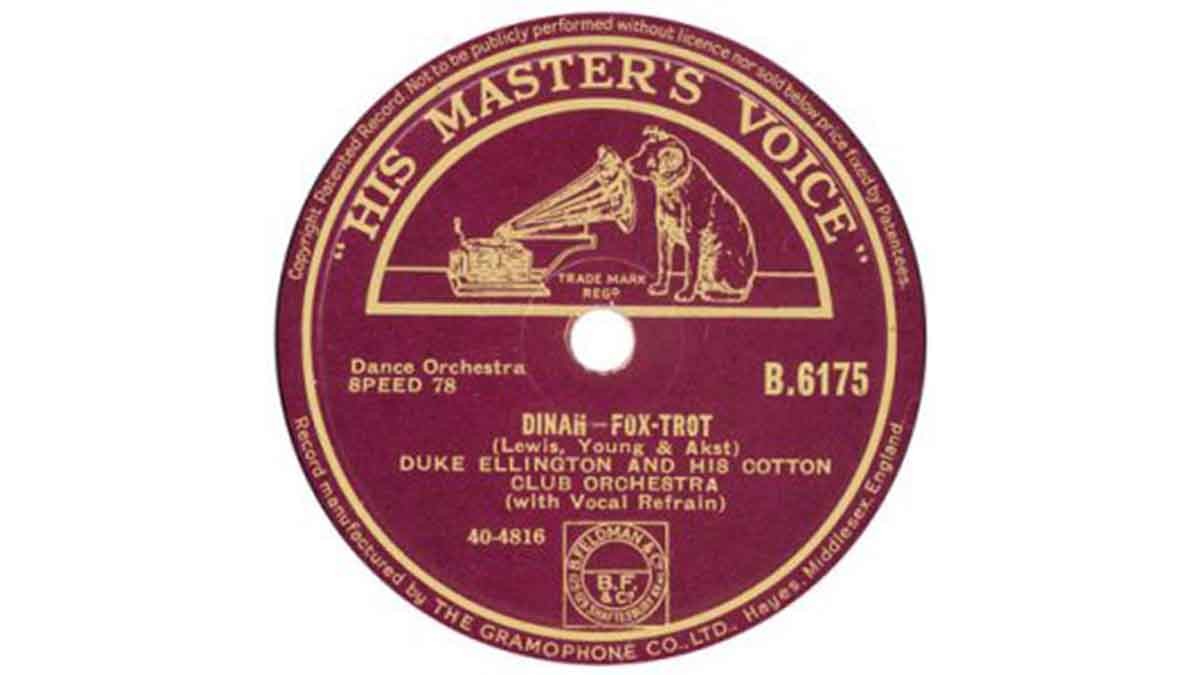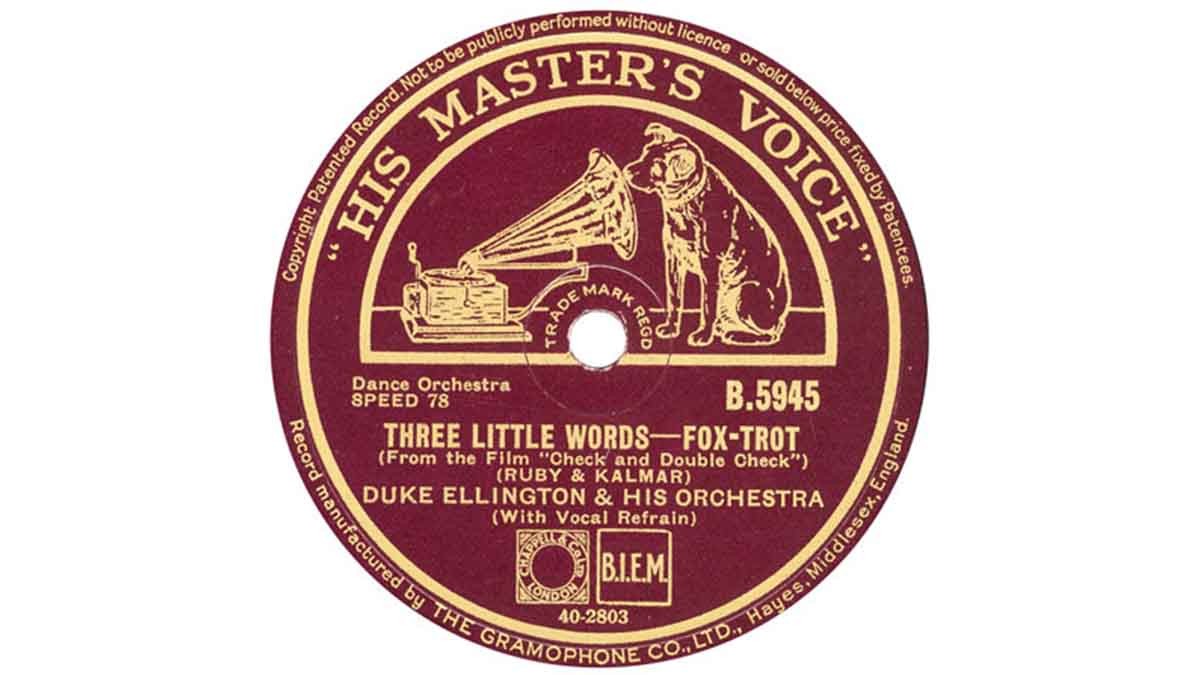HMV record labels on the B-Series: 1912-1958.
In 2000, the City of London Phonograph and Gramophone Society published the impressive ‘Catalogue of HMV “B” Series Records’, by Frank Andrews and Ernie Bayly. (-1) This remarkable work, many years in the compiling, gives great detail on each of the approximately 9,400(!) discs in the series, the great majority of which were, of course, for the British market. In addition, the authors described the various designs of labels used. They listed 17 types.
In April 2005, by way of a small tribute to Frank and Ernie, I decided to try to compile a set of these 17 types for this website. Together with help from Han Endeman (The Netherlands), Dr. Rainer Lotz (Germany) and Mike Thomas, progress was rapidly made. However, it also became clear that it was difficult to confine the label design just to seventeen broad types.
After some discussion, Han Endeman proposed a new classification based on Andrews & Bayly. Further, he kindly undertook to develop such a system. Han’s proposals are, accordingly, set out below. An example of each label accompanies the description. Andrews and Bayly give a date and catalogue number range for each of their 17 types. I have interpolated these in square brackets into Han’s text against the most appropriate label in his new classification, which defines 22 types. (But see also appendix).
Classification of HMV labels used in the “B” series.
By Han Endeman
HMV variable features [at 5 = at 5 o’clock position, &c]:
1. Position of the catalogue number.
a. in center, in rectangle below spindle hole
b. at 5
c. at 3; prefix (B) followed by dot
2. Size of trademark (dog + gramophone in half-circle) [= Nipper trademark]
a. large (i.e. spindle hole within tmk); text “TRADE MARK REGD” around spindle hole
b. small (i.e. spindle hole below tmk); text “TRADE MARK REGD” above spindle hole
3. Colour of trademark
a. in colour; background light
b. in colour; background dark
c. monochrome
d. dog + gramophone in outline (not a chronological type)
4. Lower margin text about manufacturer
a. absent (text – as in b – is shown below trademark)
b. “Record manufactured by THE GRAMOPHONE CO., LTD., Hayes, Middlesex, England.”
c. text reduced to: “THE GRAMOPHONE CO., LTD.”
5. Typefaces of cat. no., tune title, mx. no.
a. characteristic early typeface
b. sanserif typeface
6. Presence of 2 quadrants, in the lower part of the label at 4-5 & 7-8 o’clock positions, containing information (performance, mx. no. & cat. no.)
a. white, gold-lined quadrants
b. quadrants not white but in same colour as the remaining part of the label
7. Position of mx. no.
a. at 6
b. at 7
c. at 9
8. Statement SPEED 78
a. SPEED 78 (underlined) in right quadrant at 4
b. SPEED 78 (not underlined) at 4
c. SPEED 78 at 9
d. only 78 at 9 (after mx. no.)
9. Side indication (A/B) at 7
10. Made in England on later issues at 3
a. in small letters in italics
b. in capitals
11. Performance details (dance orchestra, &c).
a. at 8
b. at 9
c. omitted
Minor features not used to distinguish label types are:
– Small variations within the trademark (like shape of dog, horizontal line) – The picture of the dog is slightly different in the various label types, but it is not known if this is a diagnostic feature.
– Minor colour variations in the trademark and in the cat. no. panel in type #A
– Size of typefaces
– Mx. no. between brackets or not
– The use of capitals or small letters for composers and performance details.
Though these variations can be described, they seem not useful for a further subdivision, especially since they seem to vary at random.
Label types
3 major label types (A-C) are distinguished here, based on the position of the cat. no.
The 22 label types (#A1-5, B1-8, C1-9) in chronological order are:
#A1 [B-101 – B186; 1912 to May 1913]
A full description is given of the initial design; afterwards only the variations are listed.
- Cat. nr in rectangle below spindle hole, on yellow or cream background.
- Tmk large (with text “TRADE MARK REGD” around spindle hole), in colour.
- Background in tmk mainly yellow.
- Tmk not bounded by a golden border.
- Text “Record manufactured by THE GRAMOPHONE CO., LTD., Hayes, Middlesex, England.” below tmk.
- Characteristic early typeface.
- Tune title in capitals, composer not in capitals [not known if this is characteristic for type #1].
- Performance description next to rectangle with cat.nr.
- Mx.nr at 6 [= at 6 o’clock position], not between brackets.

#A2 [B-187 – ca. B-688; May 1913 to September 1916]
Background in tmk dark.
Tune title not in capitals; composer in capitals.
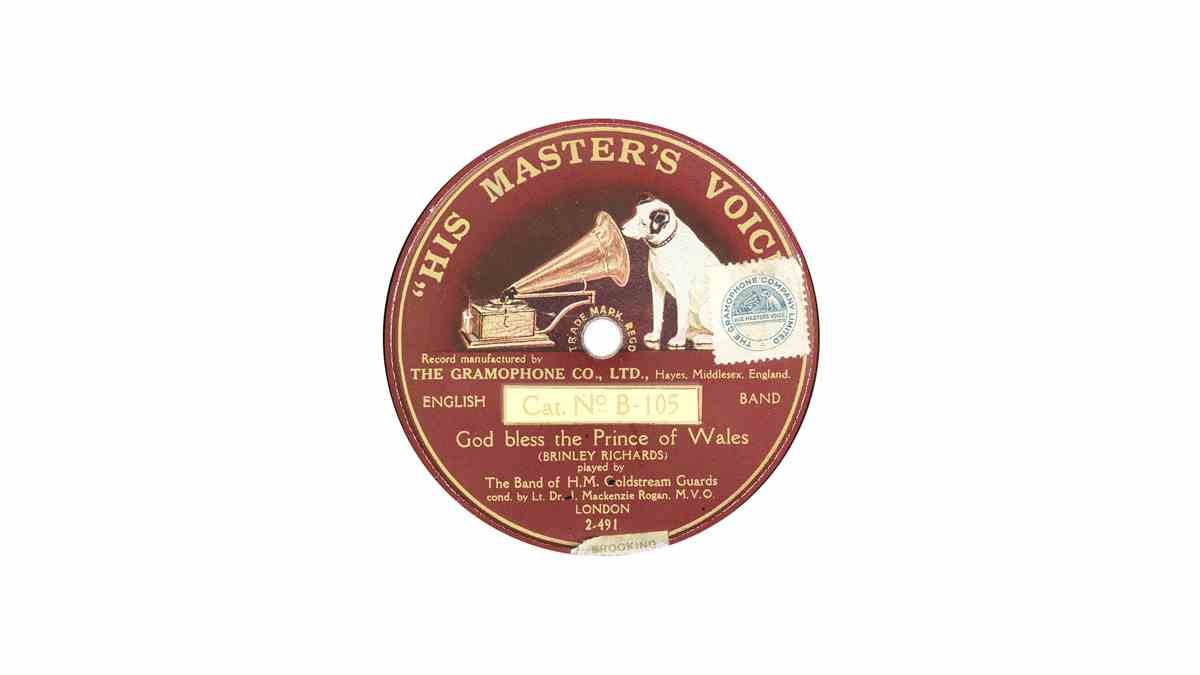
#A3 [B-689 – B-751; September 1916 to January 1917]
- Tmk gold-lined and with dark background. Dog & Gramophone outlined with yellowish-green tint.
- Wide rim outside circular borderline.
NB. This type A3 is surprisingly elusive. When this page first appeared, 10 years ago, we had to use a 12″ C- series disc as an example. The above 10″ example only turned up in June 2015, prompting the latest revision of this page. It is an unattractive design, which presumably accounts for its short life. Note by NF.
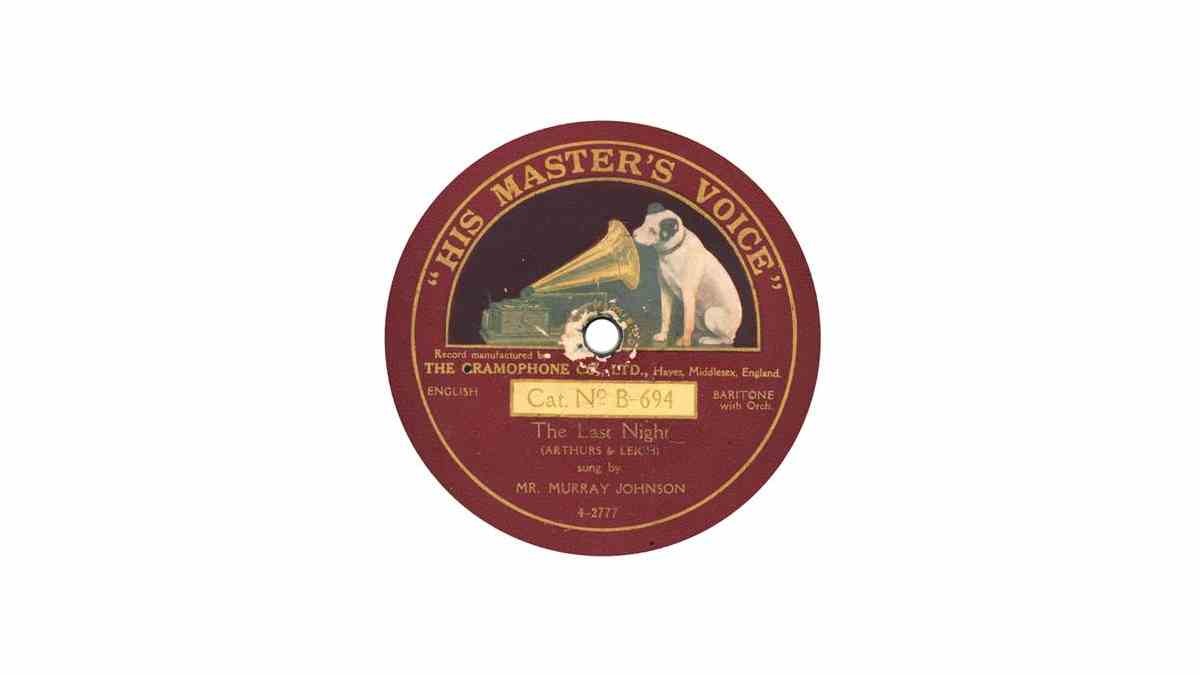
#A4 [B-752 – B-808; January 1917 to July 1917]
- As #A3, except more details in dark background (floor visible).

#A5 [B-809 – B-881; July 1917 to February 1918]
- Tmk monochrome.
- Cat.nr in rectangle against white background.
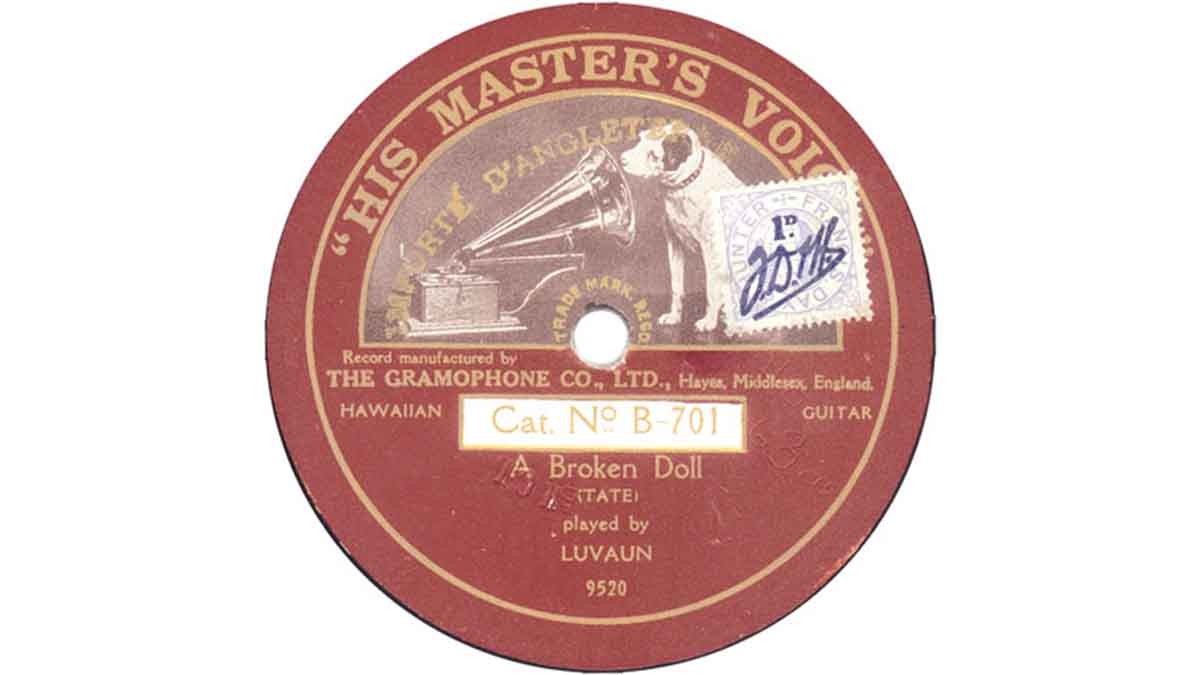
#B1 [B-882 – B-1044; February 1918 to September 1919]
- Cat.nr at 5.
- Text about manufacturer along lower margin.
- Two white, gold-lined quadrants in the lower part of the label, at 7-8 & 4-5 o’clock positions, containing information (performance, mx.nr & cat.nr)
- Performance details at 8.
- Mx.nr at 7 (between brackets).
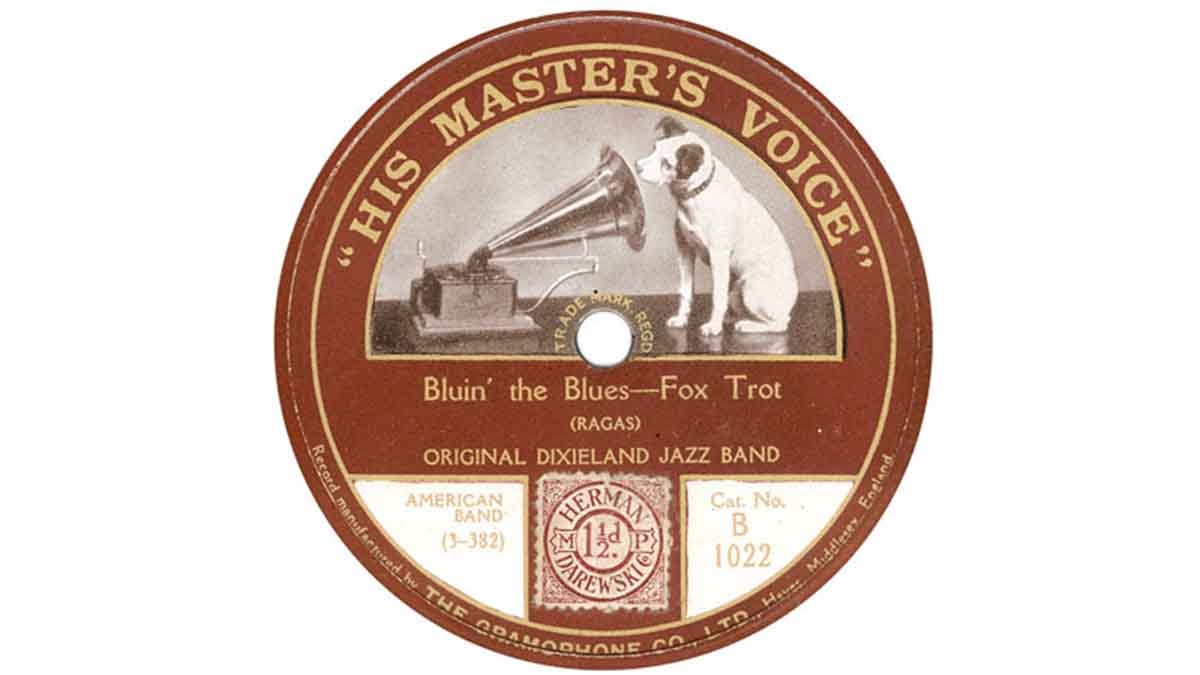
#B2 [B-1045 – B-1930; September 1919 to February 1925]
- Tmk in colour. Dog in slightly different position.
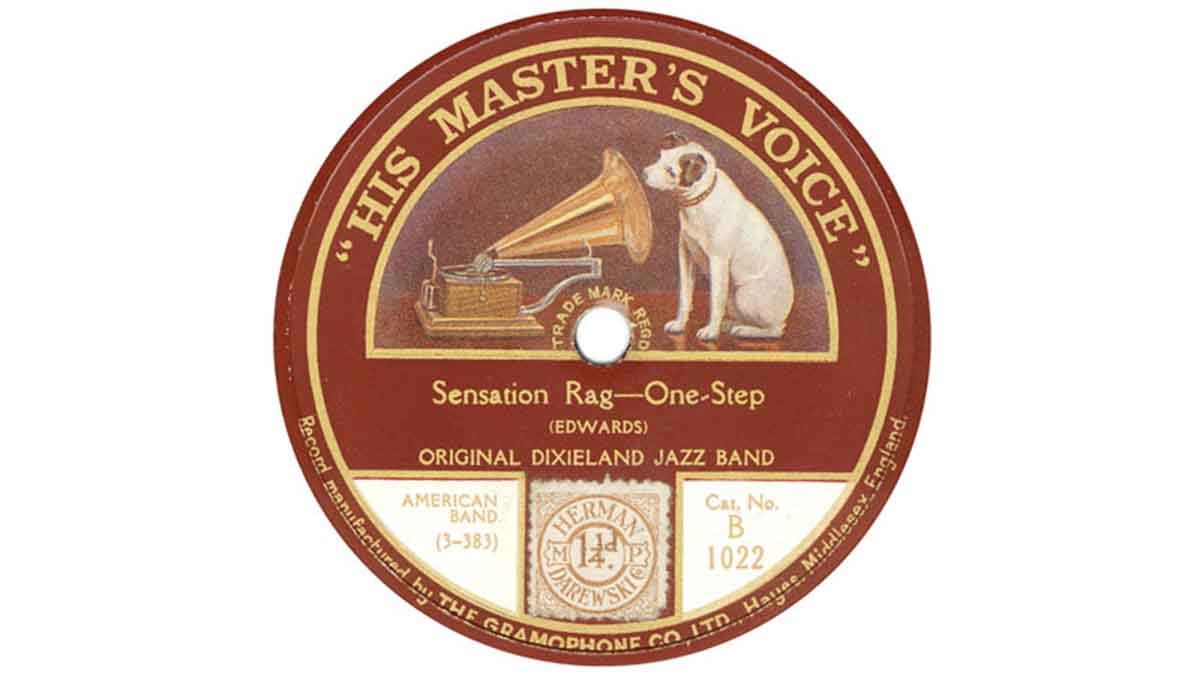
#B3 [B-1931 – B-2283; February 1925 to April 1926]
- Quadrants (gold-lined) not white, but in the basic colour of the label.
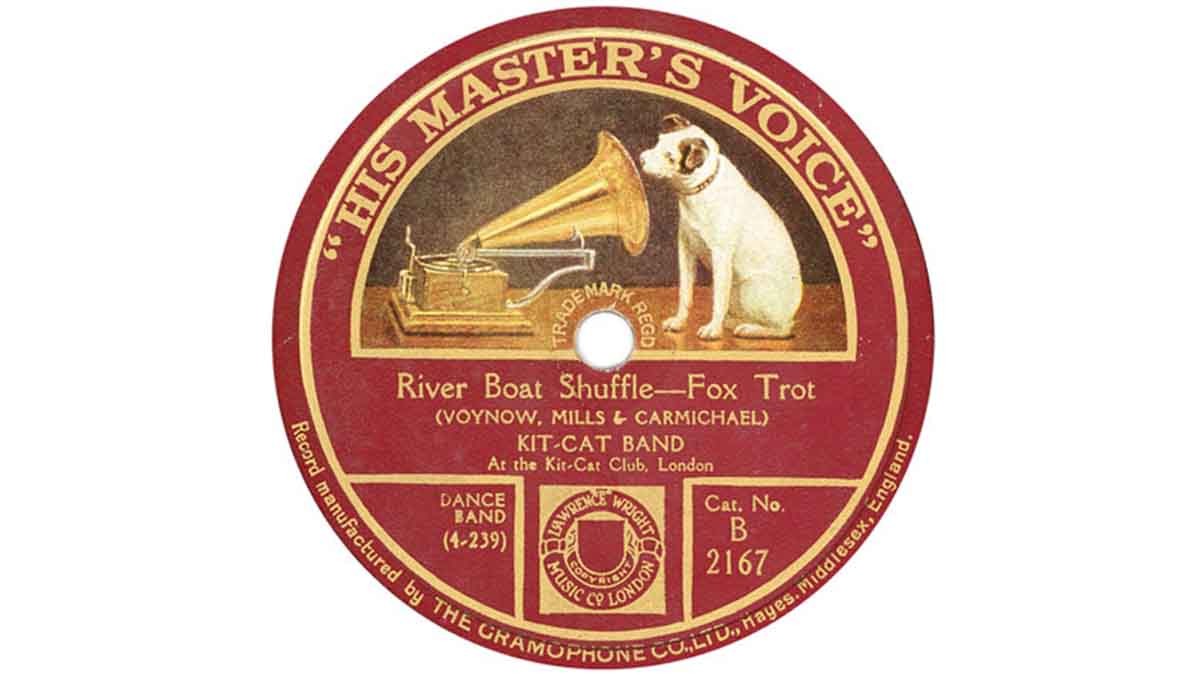
#B4
- Title & cat. no. in a new, larger, bold, sanserif typeface.
- Title in capitals.
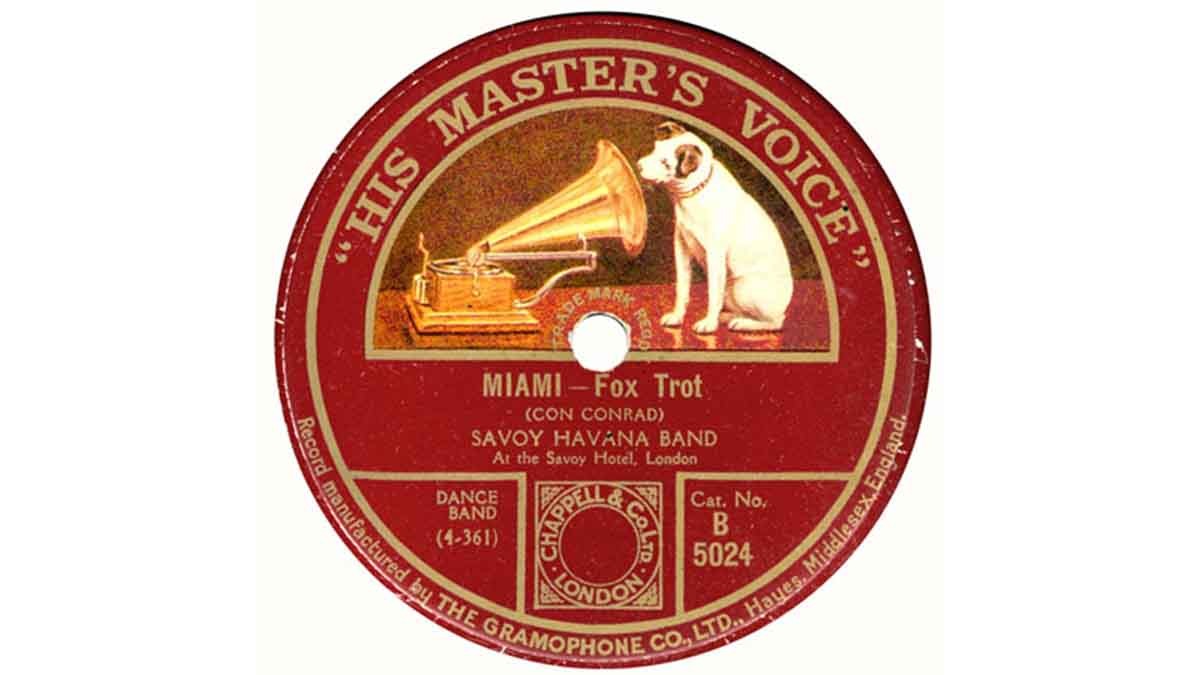
#B5 [B-2284 – B-2332; May 1926 to September 1926]
- Text SPEED 78 (underlined) in right quadrant at 4.
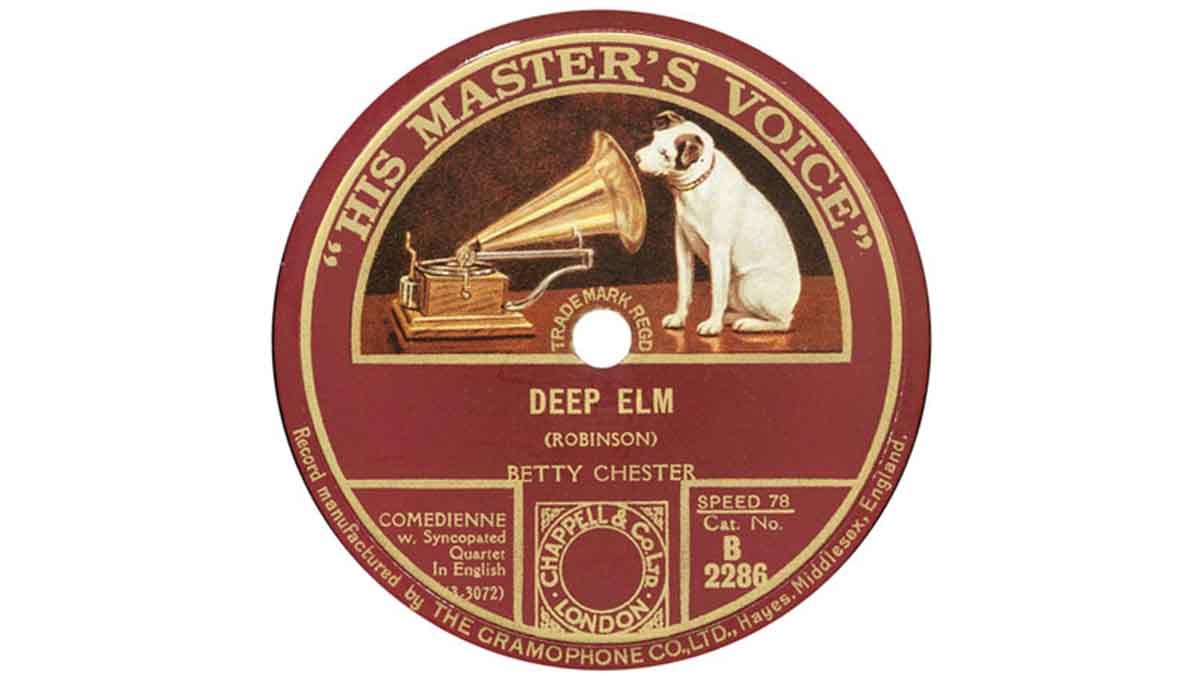
B6 [B-2333 – B-4256; September 1926 to October 1932]
- Lines bordering the quadrants absent.
- SPEED 78 not underlined.
- There seem to have been experiments with various slightly different typefaces. Some labels use a larger, elongated font for title & cat.nr.
- The other information (artist, composer, performance, mx, &c) also in sanserif typeface.
- The performance description may be in capitals or in small letters.
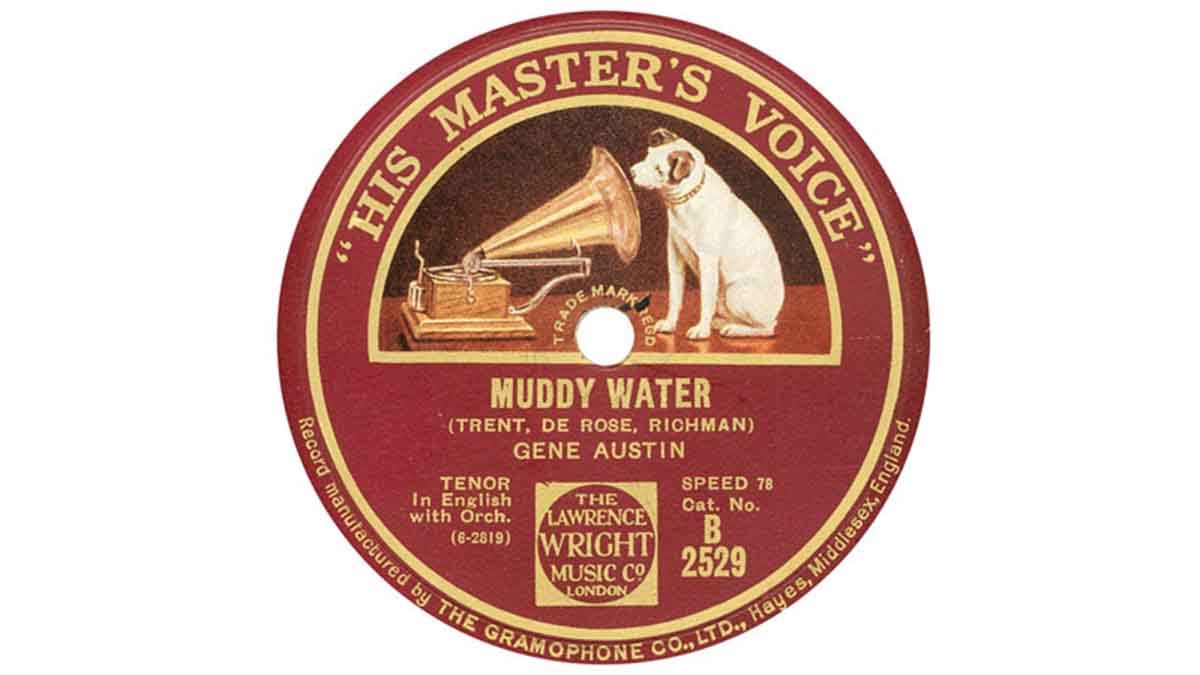
#B7
- Side indication (A/B) at 7.
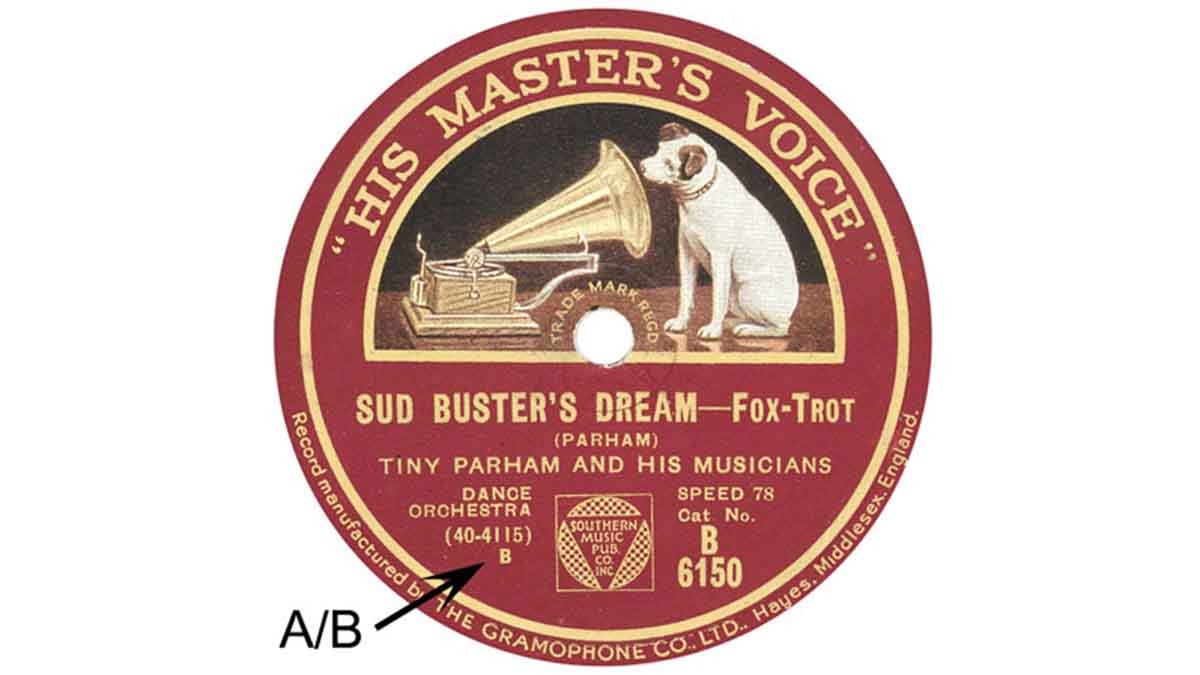
#B8
- Text along upper margin: “This Copyright, Patented Record may not be sold below price fixed by the Patentee, nor publicly performed.”
- Side indication (A/B) omitted.
- Mx.nos. between brackets or not.
NOTE that this is the first upper margin copyright text. An earlier text listed by Andrews & Bayly (“This Copyright Record must not be Sold below Price fixed by the Patentee nor Publicly Performed.”) must be an error.
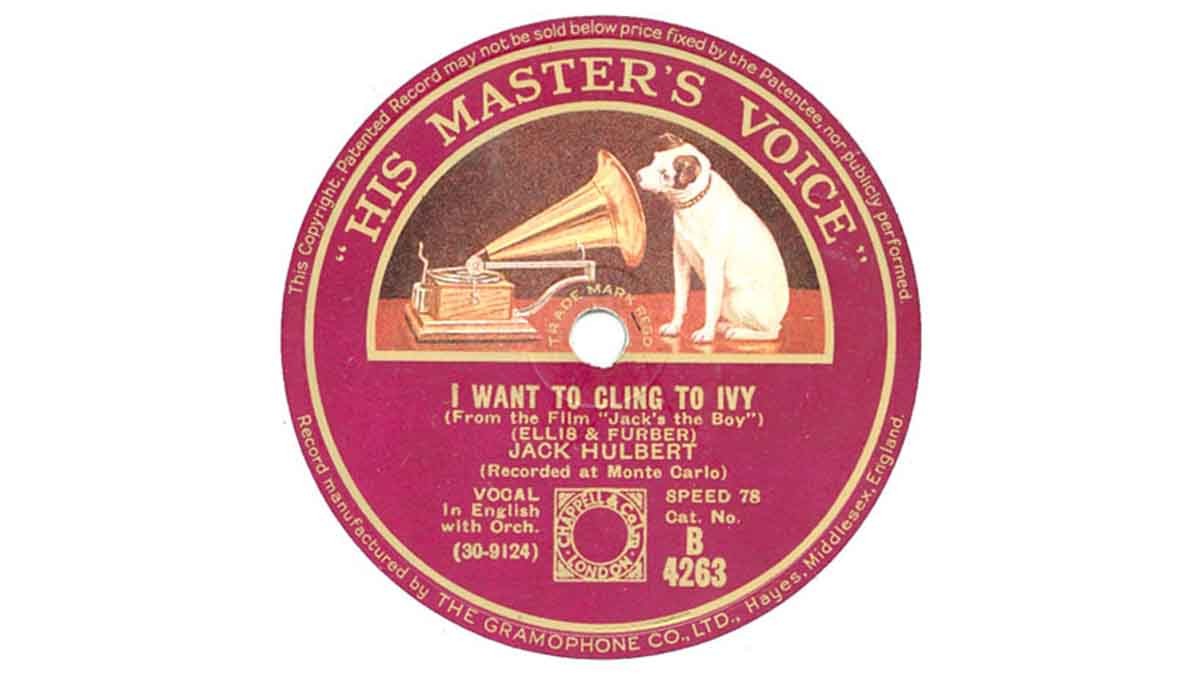
#C1
- Cat.nr at 3. Prefix (B) followed by dot.
- Cat.nr printed below tmk and not extending beyond tmk.
- Performance description (if present) and speed at 9.
- Mx.nr at 6, but at 7 if there is insufficient space; between brackets or not.
- Tune title in smaller typeface (always in capitals).

#C2 [B-8253 – B-8884; January 1935 to April 1939]
- Tmk small (spindle hole outside the tmk and text “TRADE MARK REGD.” above the hole).
- Upper margin text: “This Patented Copyright Record must not be sold below price fixed by Patentee, nor publicly performed.”
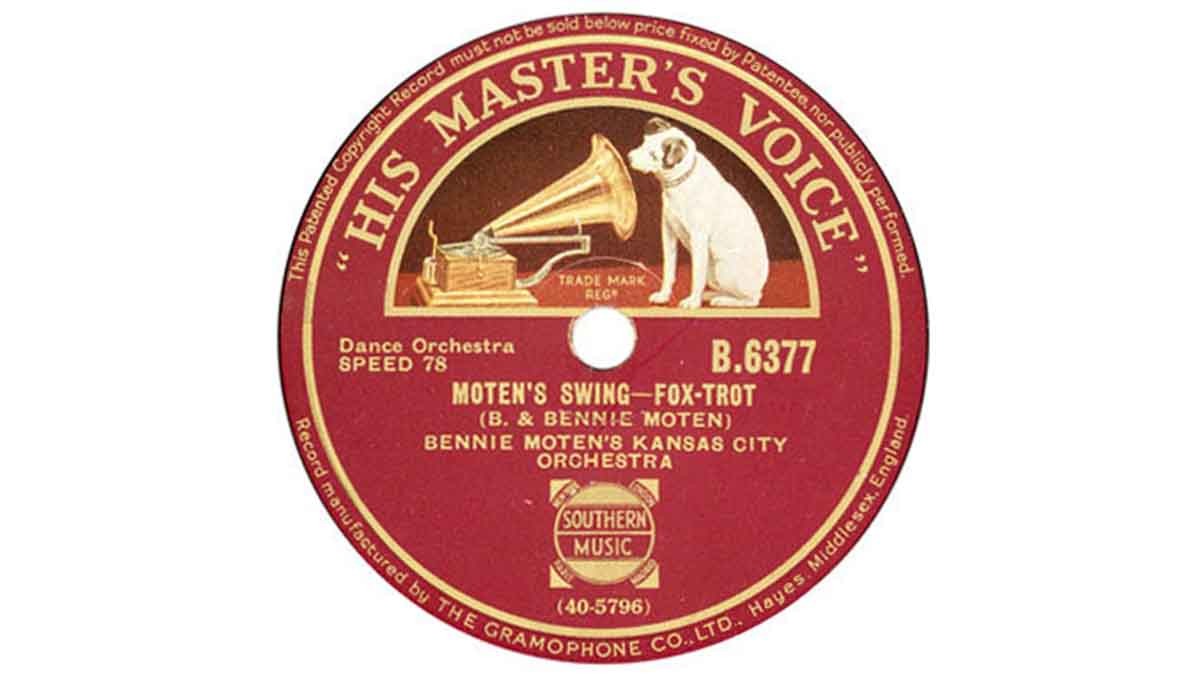
#C3
- Upper margin text: “Copyright Patented Record. Not to be publicly performed without licence nor sold below price fixed by Patentees.”
- At present the latest issue reported with this margin text (including the word “nor”) is B-8636.
- Cat.nr usually extending beyond the lower border of the tmk, and thus nearer to the right label margin.
- Mx.nr not between brackets.
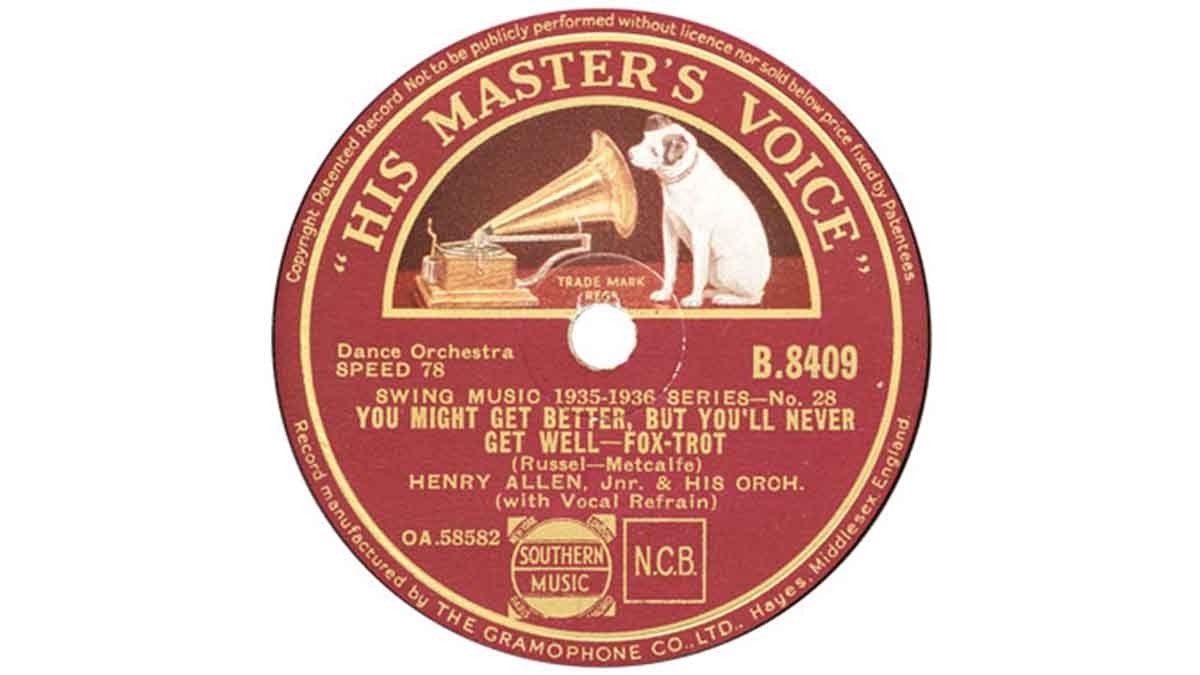
#C4
- Same upper margin text as before, except “or sold” instead of “nor sold” (It seems that the letter n was usually merely removed, resulting in additional space before the word “or”.)
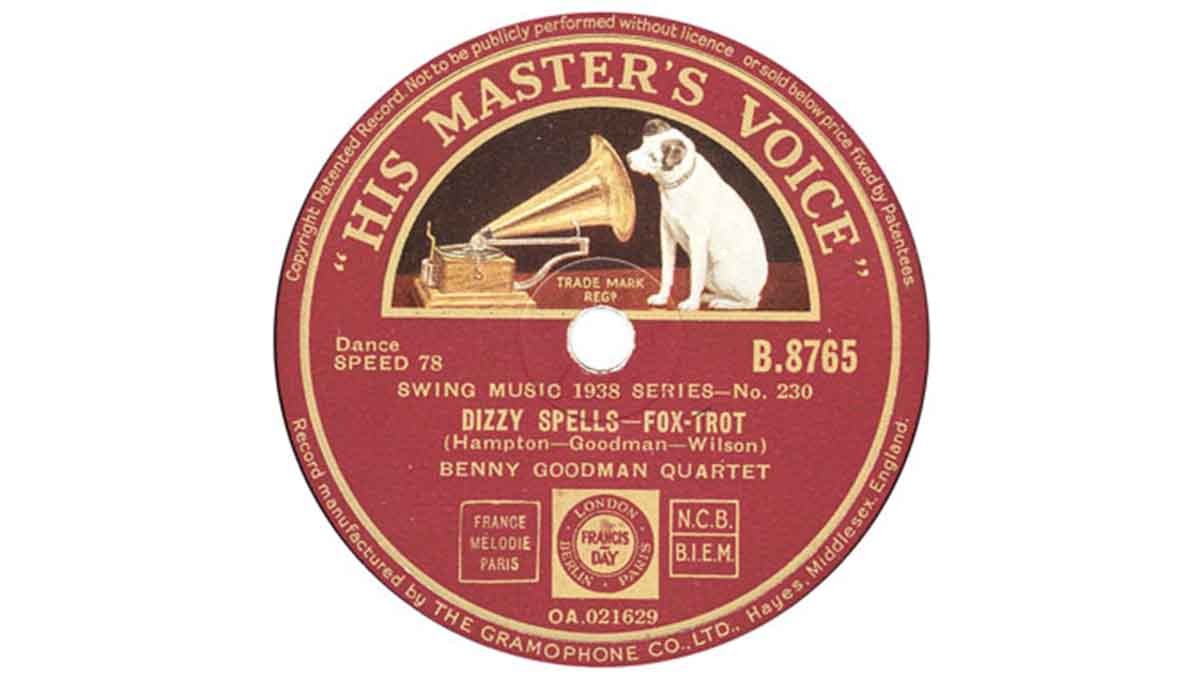
#C5 [B-8885 – B-9473; May 1939 to May 1946]
- Tmk monochrome. (But see Appendix below for tmk in colour solely on pressings released in December 1945 – commemorating the end of World War II.)
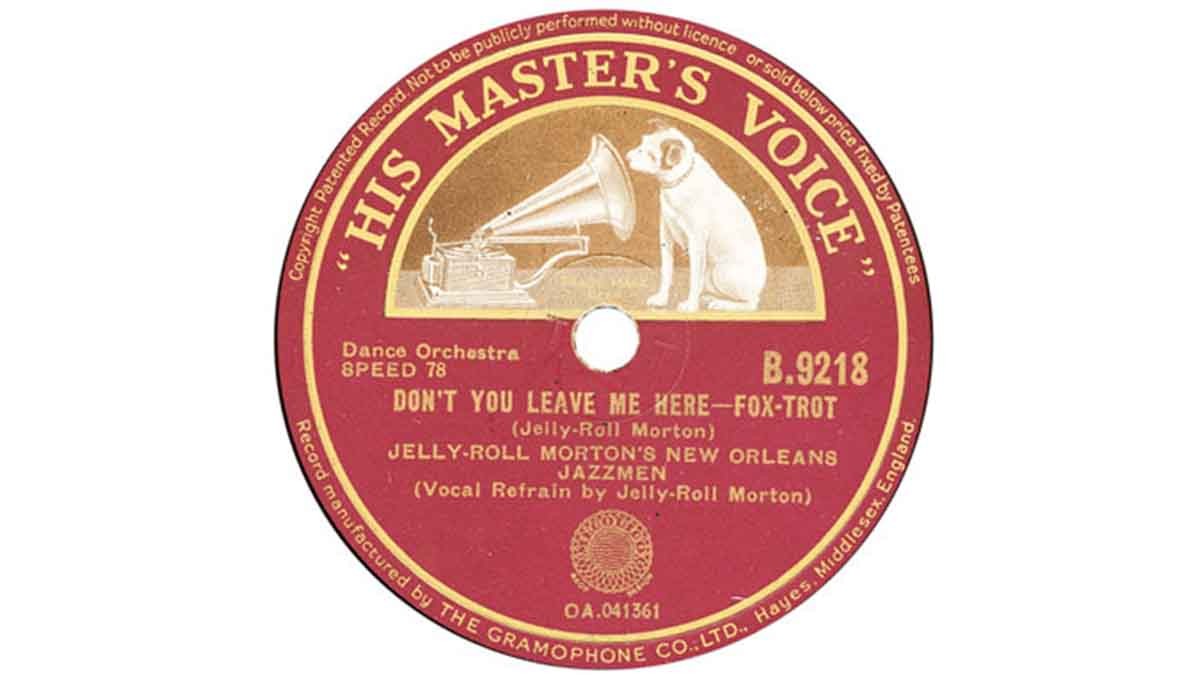
#C6
- Lower margin text reduced to: “THE GRAMOPHONE CO., LTD.”
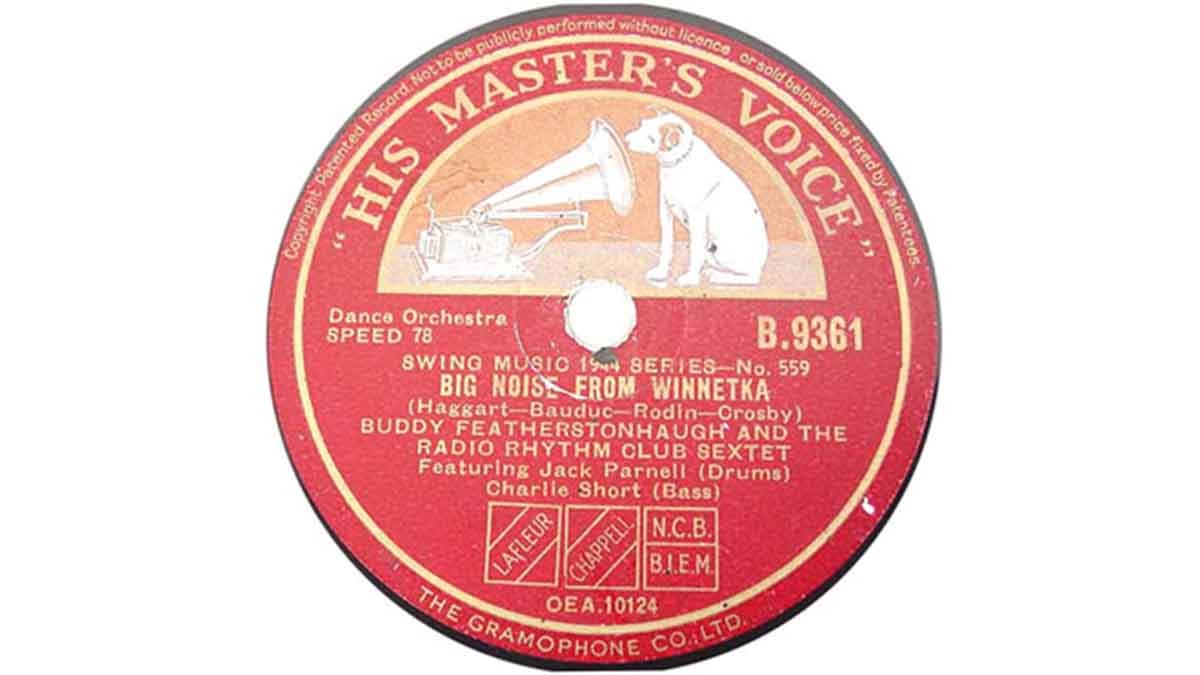
#C7a [B-9474 – B-9681; June 1946 – September 1948]
- Text “Made in England” in italics between tmk and cat.nr at 3.
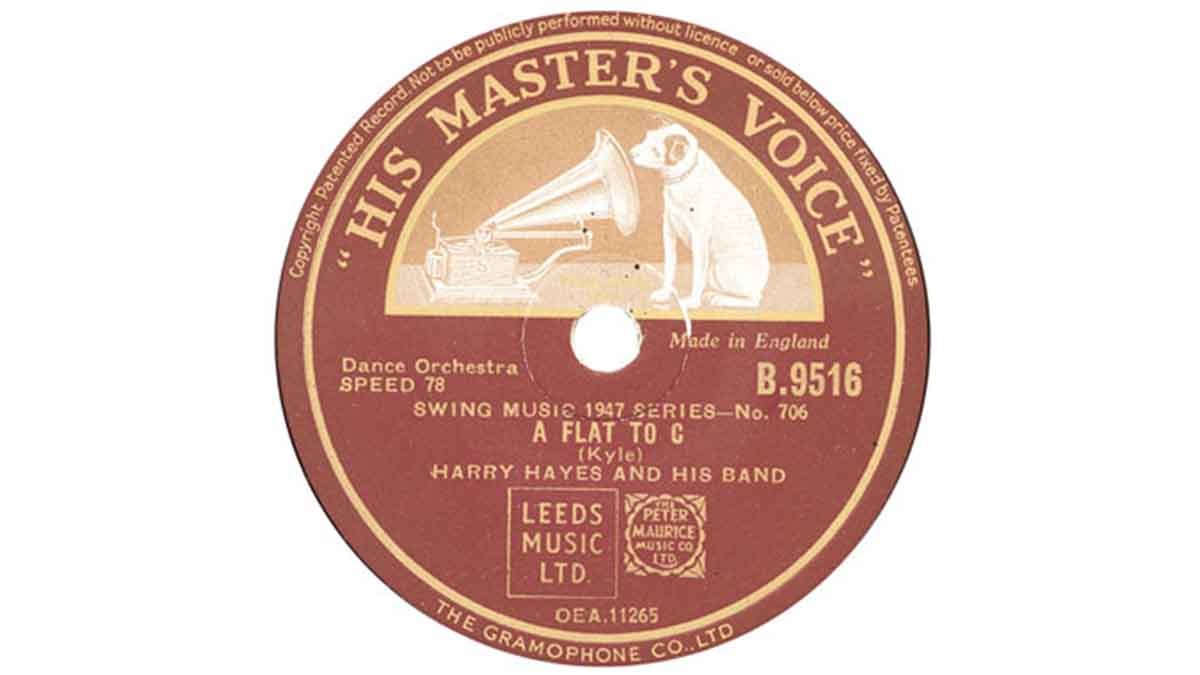
#C7b
- In the last issues of type #C7a the performance description (at 9) is absent, like in #C8.
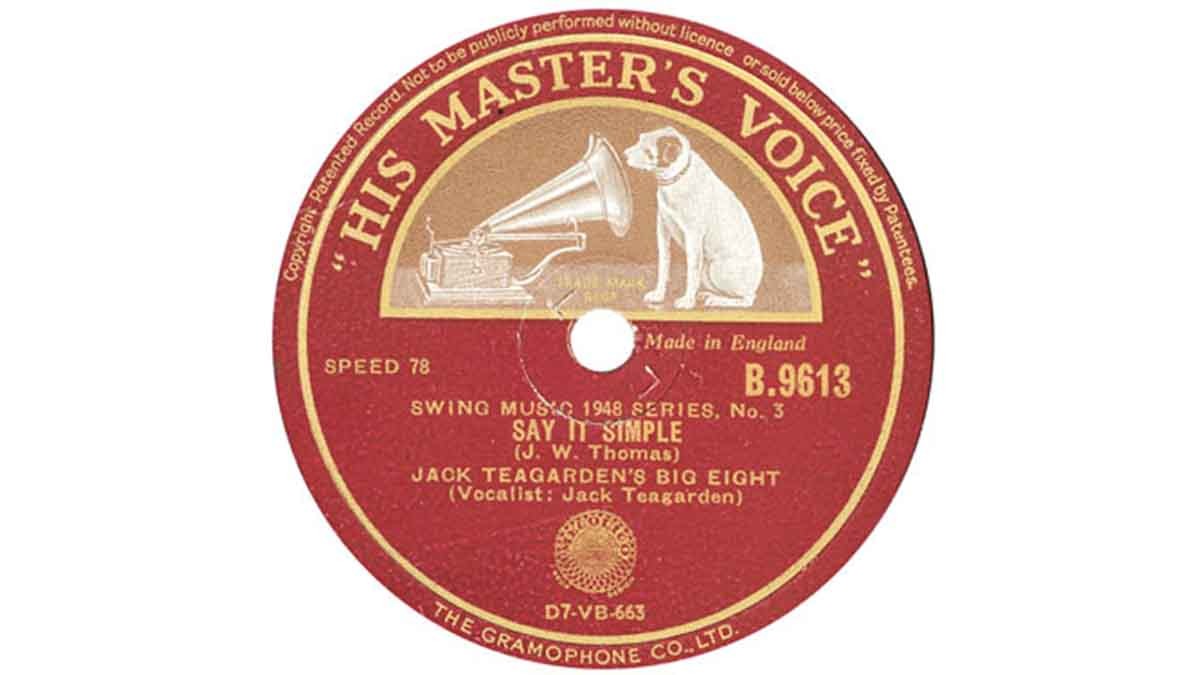
#C8 [B-9682 – B-10968; September 1948 to 1958]
- Upper margin text, occupying (together with the lower margin text) the complete margin: “Copyright Patented Record. Not to be sold (…) Prohibited.”
- Text “Made in England” in small capitals (block letters).
- Only “SPEED 78” at 9.
- Performance description absent, except in (some or all) reissues.
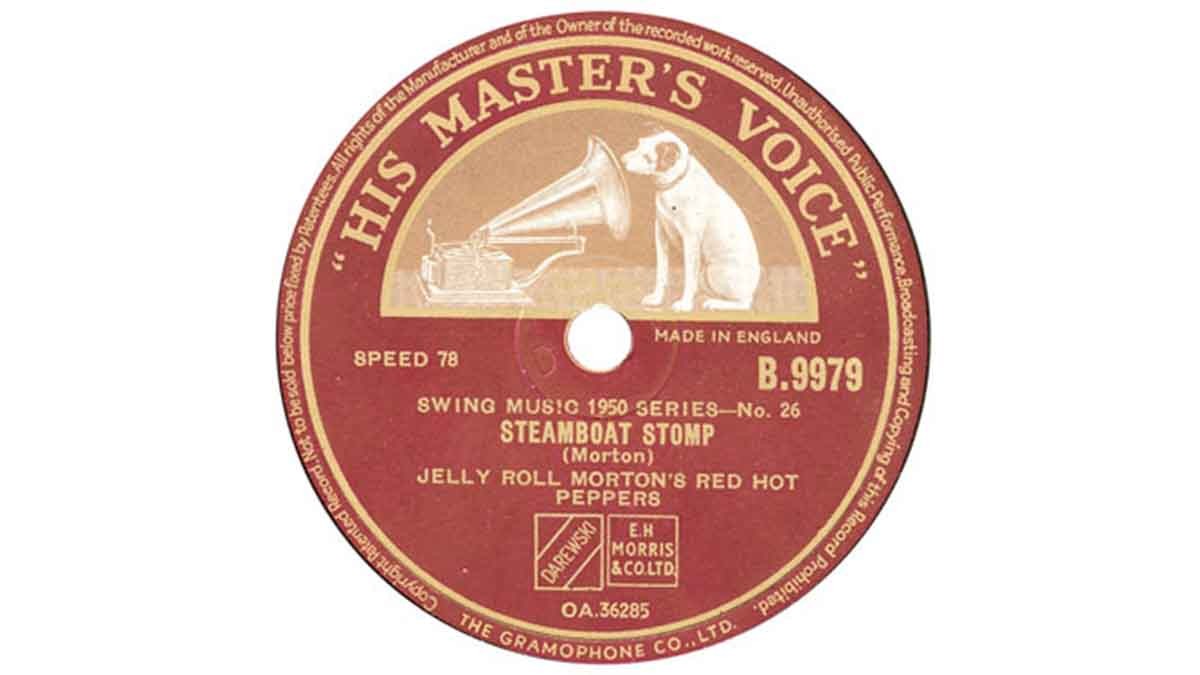
#C9
- Mx. no. followed by “78” at 9 (word “SPEED” omitted).
- © Han Enderman 2005.
- Note:
- 1. The full details of the book which inspired this web page: ‘Catalogue of HMV “B” Series Records’. Frank Andrews & Ernie Bayly. City Of London Phonograph and Gramophone Society Ltd., 2000. The book is still available and may be obtained from the Society. Website: www.clpgs.org.uk
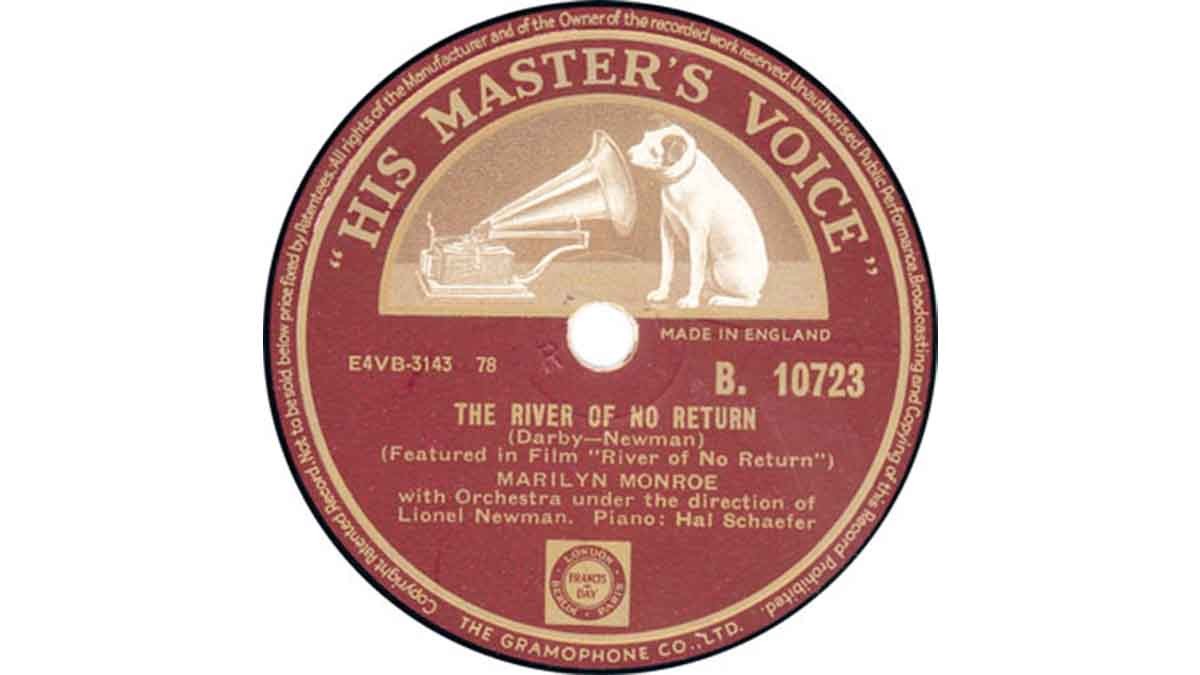
Appendix
In the course of 46 years and nearly nine and half thousand issues there are bound to be many ‘exceptions to the rule’. They might be termed ‘hybrids’. Obviously, a record with a long catalogue life would appear with many sorts of labels as it was re-pressed. They even used up old label stocks; the two illustrations above of the ODJB HMV B-1022, Han’s types B1 and B2, are from the same disc. What we don’t want to see is a 1935 new issue with a 1932 label! There are, however, a few notable ‘orphan’ labels to be found in the B- series, and some of them are given here.
1
Essentially, all HMV labels are ‘large’ (3.375″, ~8.6cm) until Han’s type C1 of the early 1930s. From type C2, they are ‘small’ (3″, ~7.6cm). However, from about 1924, when the groove of a record ran on very long, smaller labels were produced as and when required. Generally speaking these will keep the design of the normal size label, as we would expect. But there is one important departure from this. There is apparently no small version of Han’s type B1 & B2, the ‘white quadrant’ label. Here is seen HMV B-1741, issued in January 1924. We would expect the B2 label type. But, as it a small label, it has no white quadrants. Both sides of B-1741 have these ‘early small labels’. Their size is only 2.875″ (7.3cm). B-1748 was issued in February 1924, and has this small label on one side, and the large white quadrant label on the other. It would appear that these small labels were engendered by Victor making longer cuts and reducing the size of their labels too, at this period. HMV followed suit, maybe a little later.
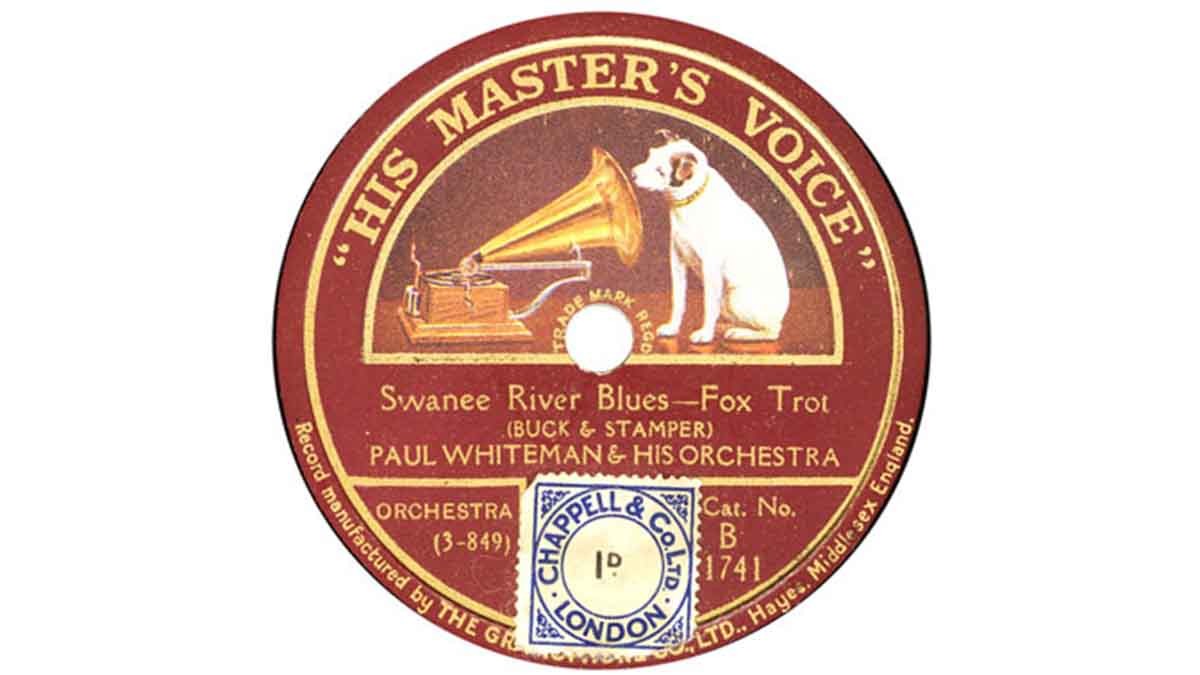
2
A very minor variant occurs on this label, where a two-sided disc is designated on the main text of the label as ‘Part 1’ and ‘Part 2’. But in addition, ‘No.1’ & ‘No.2’ appear in small print, right at the top of the label, outside the border. This disc was the first one of these I had ever seen, so acquired it. I showed it to someone, who told me that this was quite a common thing done, in earlier days, with multi-part works
3
There are HMV B-series records with a plum label. This colour was introduced with the advent of the HMV BD- series in the early 1930s, in the face of the continuing depression. These were slightly cheaper, and accordingly had the trade mark printed only in outline. (The idea of a ‘cheap HMV’ would, at one time, been unthinkable!) Equally unthinkable – and still is, for that matter – is a single series that sells at two different prices, depending on the colour of the label. Yet HMV did this. Certain fundamental Jazz issues (and perhaps others; I do not know), in the B-series were given plum labels and sold at the price of a BD- series. The ‘label copy notice’ or whatever EMI called them, stipulated the label size. Here is shown Ellington’s ‘Three Little Words’ on B-5945, which originally appeared in January 1931 on Han’s type B6 label. By the mid 1930s it had been ‘downgraded’ in price, but it was still B-5945; and therefore still had its large label. Again with Ellington, ‘Dinah’ appeared in June 1932 on B-6175 with a compulsory small label, as the cut is long. (The large label was still the standard in 1932; cf type C1 above, B-6351.) After a few years, B-6175 was demoted to BD- level and so appeared with a plum label, though small, naturally. I am not sure when this anomalous ‘bipartite’ price structure ended. I imagine the more logically-minded record dealers welcomed its demise!
4
There are, of course, large labels in sepia. The label copy notices stipulated the retention of the large label; so naturally, any of these discs still in catalogue in May 1939 subsequently appeared with sepia labels, such as this Ellington. B-4869 (part of an export series, but readily available to special order within the U.K.) was issued in November 1931. It was deleted as late as June 1957! (I can’t help remarking that B4869 is relatively common to this day, and would struggle, even if N-, to fetch £2 (~US $3.75) at a record bazaar in 2006. Alas, its neighbour in the HMV catalogue, King Oliver’s ‘Olga’ on B-4870, in spite of dwelling there from November 1931 to November 1938, attracted very few purchasers. John R.T. Davies told me that it took him forty years to find a copy of ‘Olga’!).
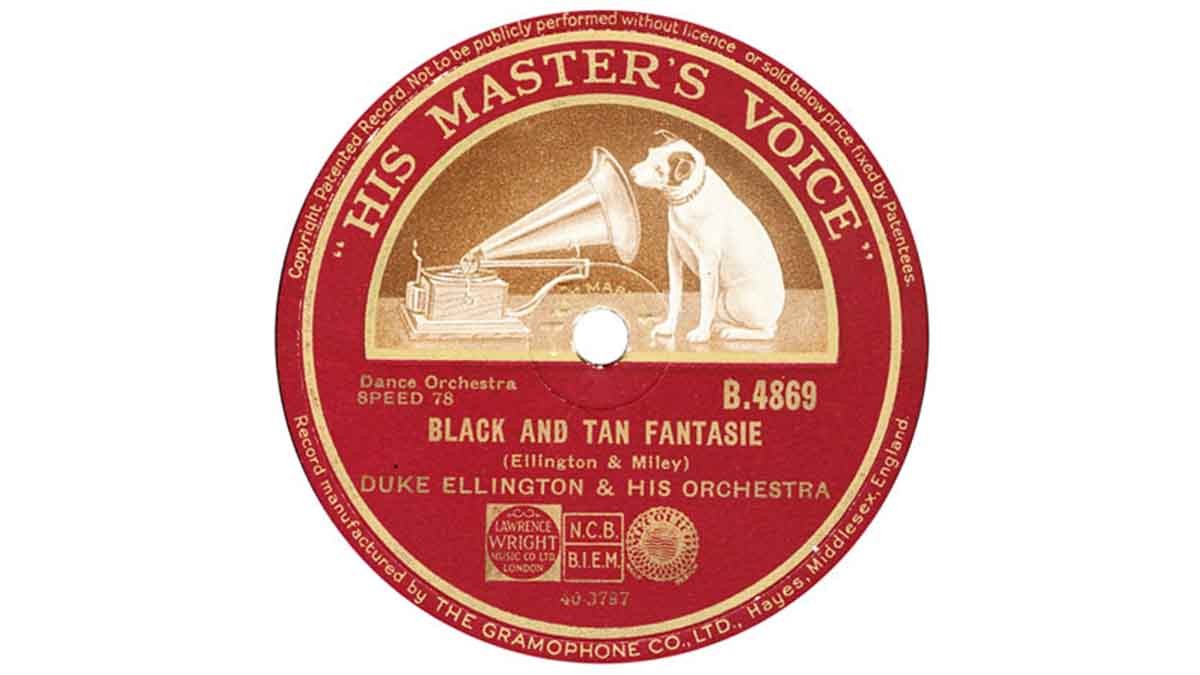
5
5. This is a kind of unknown migrant. However, I include it because it is an HMV B- series. But not one ‘Made in England’, that’s for sure. The clue lies in the bottom legend, which states ‘manufactured for’ rather than ‘manufactured by’. Yet it doesn’t tell us where it actually was made. This is quite unusual. For example, there are plenty of Indian HMVs with the regular B- prefix knocking around (largely brought back to the U.K. by Service Personnel); and, as far as I recall, they all say: ‘Made in India’. I have a hunch that this lovely laminated pressing of HMV B-9363 was made in France, at the EMI plant at Ivry-sur-Seine. B-9363 was issued in the U.K. in February 1944 and deleted in April 1950. I’m assuming that whatever troubles the French pressing plant suffered during WW2, it was eventually working fine, and these were pressed there, not for the British market, but for some other. Heaven knows which. One thing is certain, it was pressed in a hurry! As you can see, part of the label is folded under, and the pressing is wildly off-centre; a previous owner has gouged out the hole with a ‘blunt instrument’ to get it to play properly.
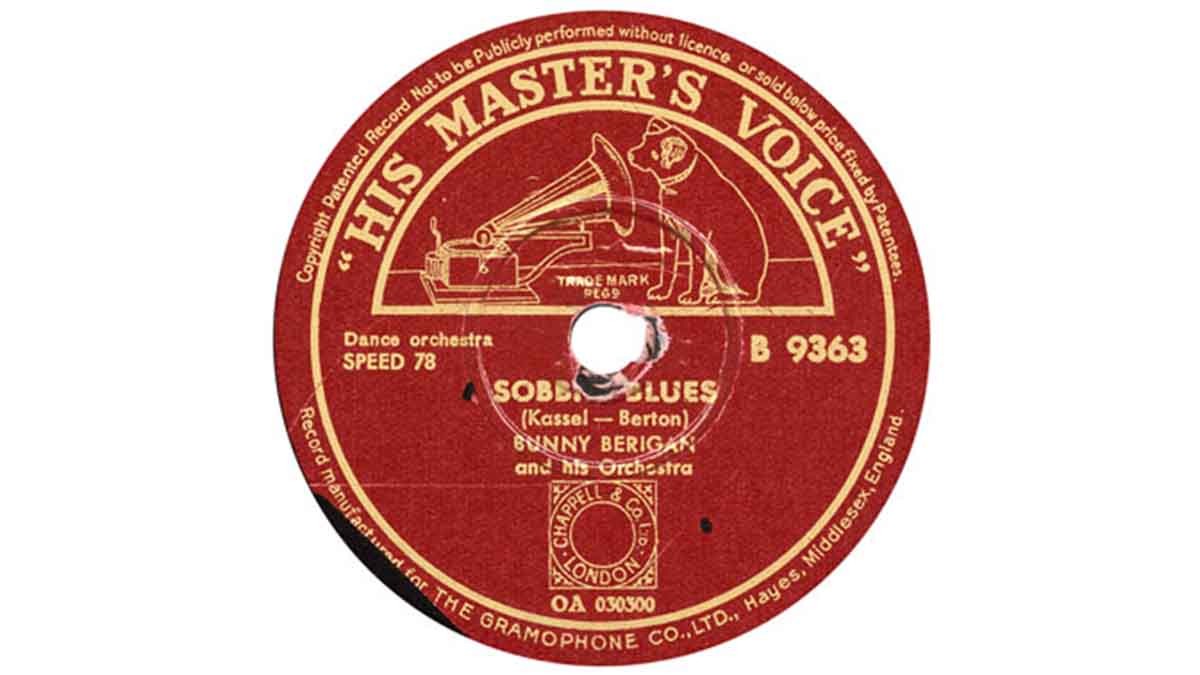
6
Lastly, you will have seen that after May 1939, all HMV B- series labels had the Trade Mark in sepia, this drabness continuing for the remaining 19 years of the B- series. But this is not quite true. At least one B- series appeared post-WW2 with a coloured label. Harry Hayes’s B-9450 proclaims that it is of the 1945 Swing music series. It was issued in December 1945 and deleted in March 1949. Mike Thomas – who furnished this scan – believes that because ‘Midnight Prowl’ was Harry Hayes’s signature tune, they allowed it to be issued in colour. Or, perhaps the coloured label was temporarily reinstated to commemorate the first Christmas of peace after the Second World War 1939-1945? Only five B-series discs were issued in December 1945: the one above, a Benny Carter coupling, plus vocal items by Lauritz Melchior, Joan Hammond and Webster Booth. Perhaps all five of these exist with coloured labels at their first pressing? Copies of ‘Midnight Prowl’ are known with the sepia label. It is assumed that these are from a subsequent pressing. Please let us know if you have any of these coloured labels.
Note added, 17th January 2018. Tim Huskisson has kindly reported that he has recently acquired a copy of the Benny Carter ‘Back Bay Boogie’ on HMV B-9449 with a coloured Nipper. He already had a copy with a sepia Nipper; so it looks fairly likely that only the initial pressings put out in December 1945 had the coloured labels. And of course, the first pressings of the high-class DA- and DB- series must also have been issued in the colour format.
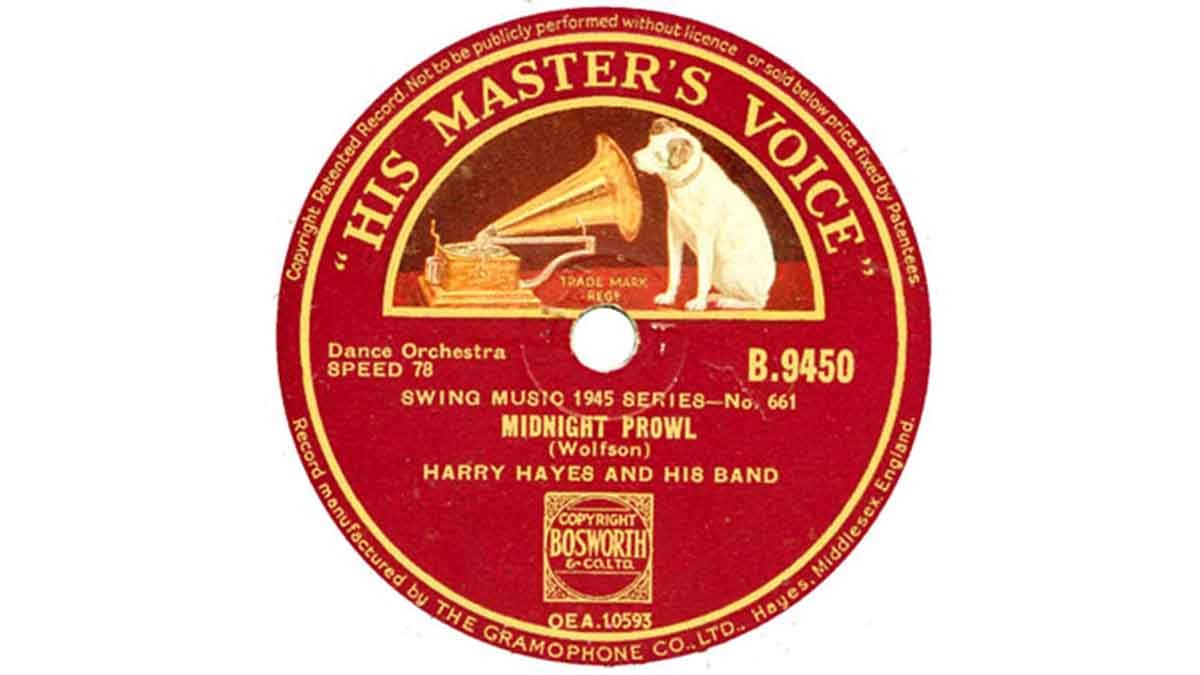
Again I acknowledge gratefully the generous and unstinting help of Han Enderman, Dr. Rainer Lotz and Mike Thomas for making this page possible.
- Page commenced 30th May 2005
- Page revised 8th September 2005
- Page revised 1st November 2010
- Page revised 13th July 2015
- Page moved to this site & revised 17th June 2016.
